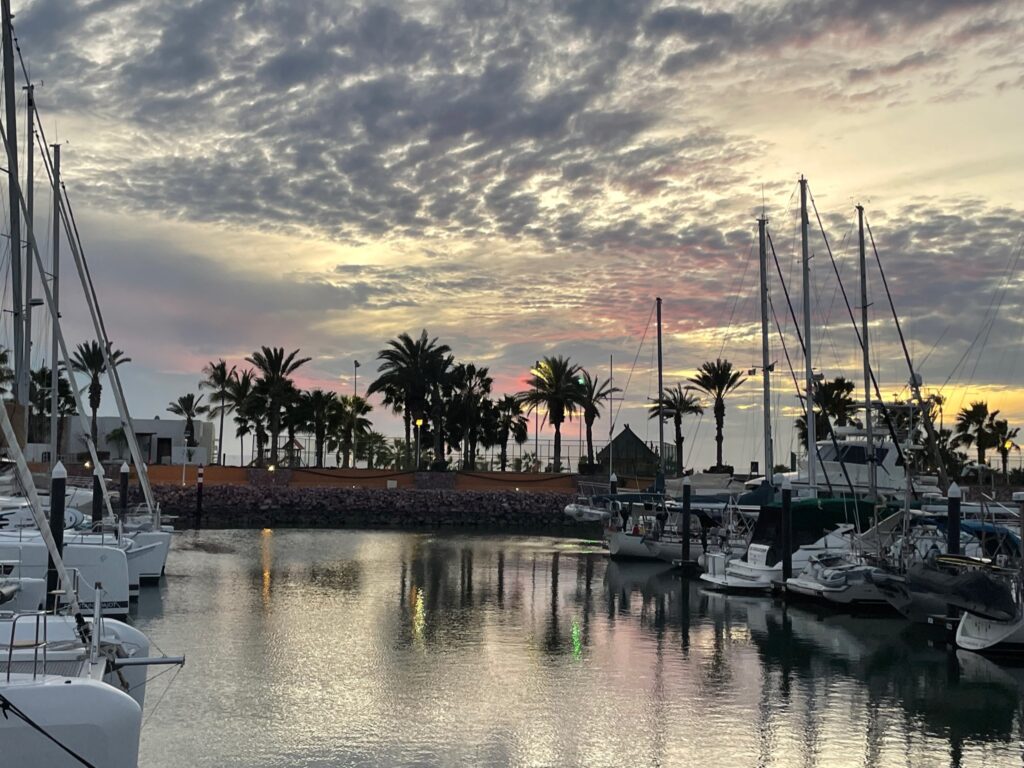On Friday (February 10), Christi had an appointment for another haircut, so we took the 0900 shuttle into town. From the cathedral (where we were dropped off), we walked a few blocks south to a bank to use the ATM.
ATM’s are not nearly as common in Mexico as they are in the US. Most of the towns we’ve visited, including Bahia de Los Angeles, don’t have any. We’ve only found them in the bigger cities that we visited: Santa Rosalia, Loreto and La Paz. We want to take a moment to rant about the bank called BBVA, which charges $9 (US) in ATM fees and gives a terrible exchange rate. Plus your own bank charges fees, too. We’ll only go to BBVA when there is nothing else available, but sadly, today the other bank’s machines were down so we were stuck using BBVA.
From the bank, we walked northeast about 1.5 miles. The farther inland we went, the less gentrified the neighborhood became. Even though we’d driven through this area before, it was interesting to get a closer look on foot.
We could be wrong, but it appeared to us that the area along the malecon and west was the “old” city, created before cars were common (which for Mexicans was relatively recently as compared to Americans). The buildings were mostly stand alone, and there weren’t many parking lots. While there were some new buildings in the area, most looked like they were older, probably early 1900s era. Many of the older buildings had been beautifully rehabilitated/upgraded, but there were also some that were pretty dilapidated. Here were a few photos from today’s walk:
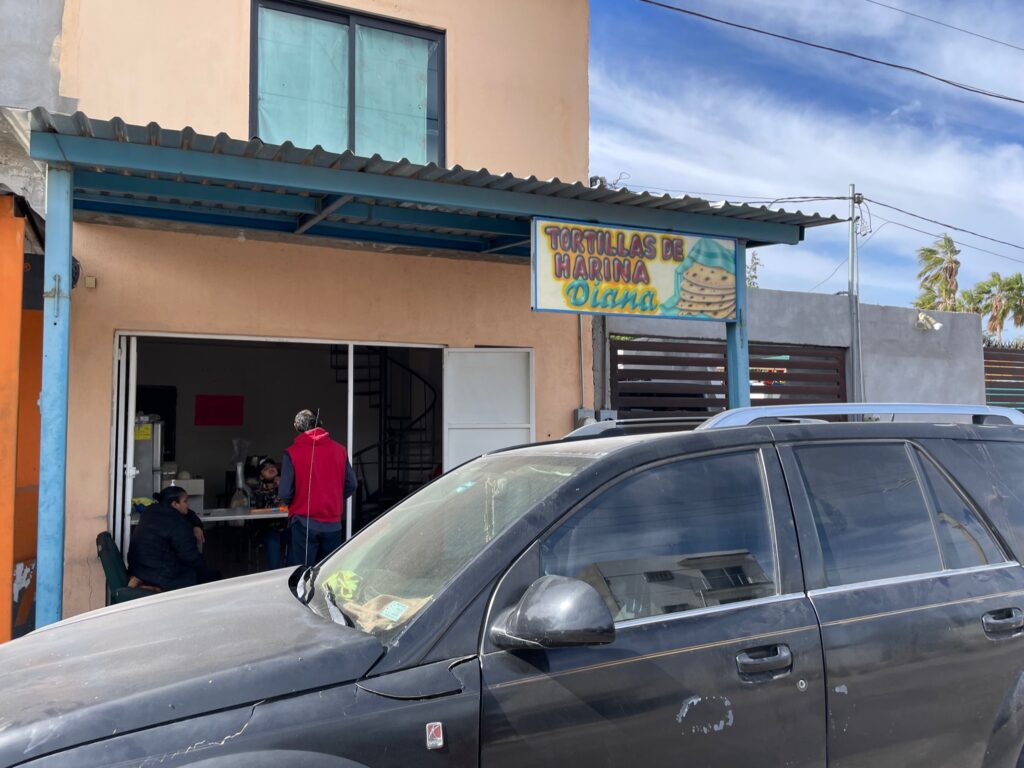
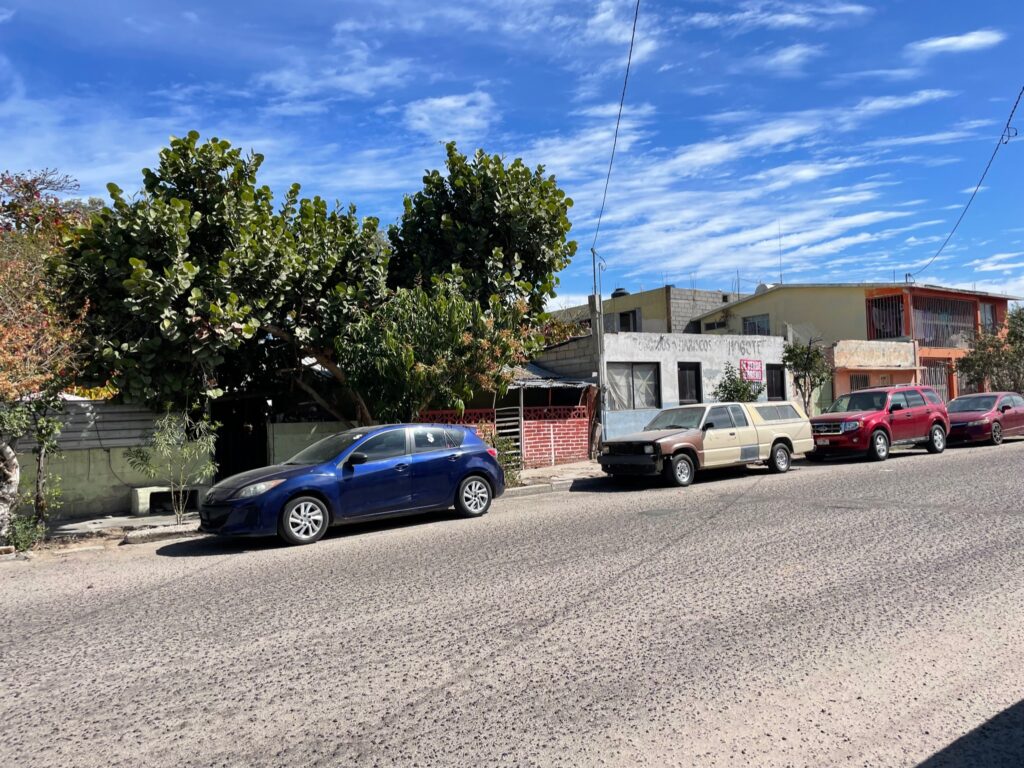
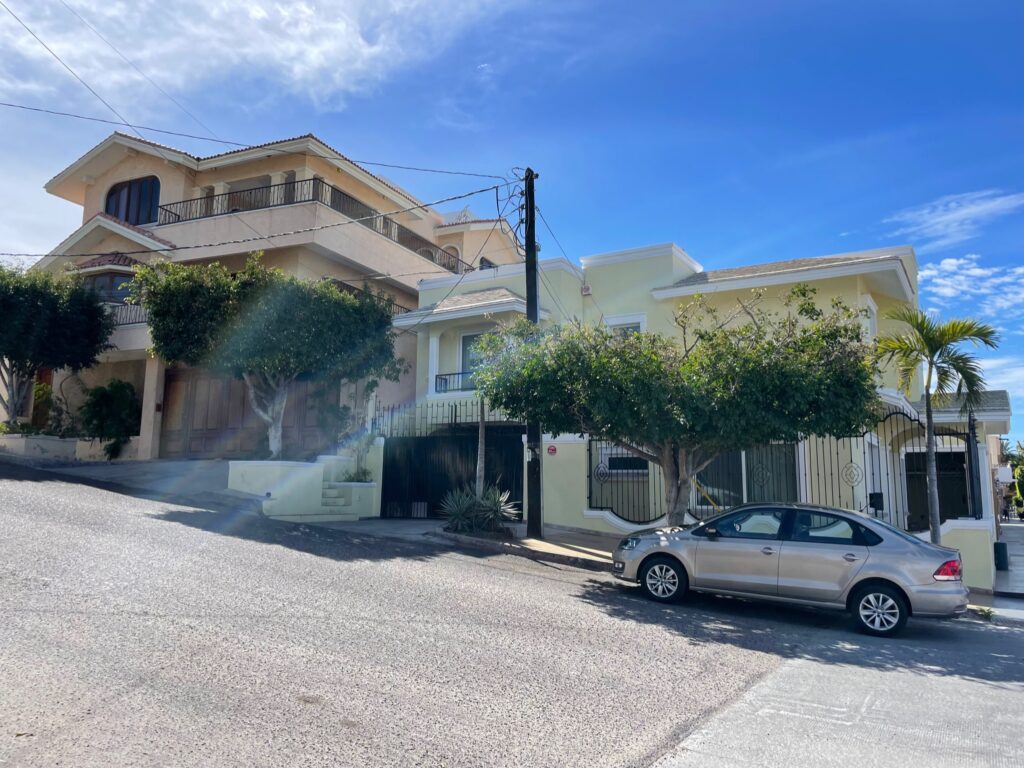
Quite a few buildings were painted with had large, colorful murals.

As an FYI, from Marina Cortez and south, the buildings generally looked newer, like maybe 1960s and on. While Mexican construction generally tends to be blocky, the buildings on the south side had more of a modern look, and there were many shopping centers with parking lots.
The buildings to the north of the old city all looked relatively new, probably built within the last twenty years.
Back to Friday…. on our walk, we passed a tortilleria, a small produce market and a hardware store, so we were able to knock out most of our errands on the walk. The haircut went smoothly and didn’t take long. We had time to kill until the 1330 shuttle back to Costa Baja, so we walked back to the malecon and had brunch at a restaurant called El Zarape Malecon. The restaurant was cheerful and had lovely views.
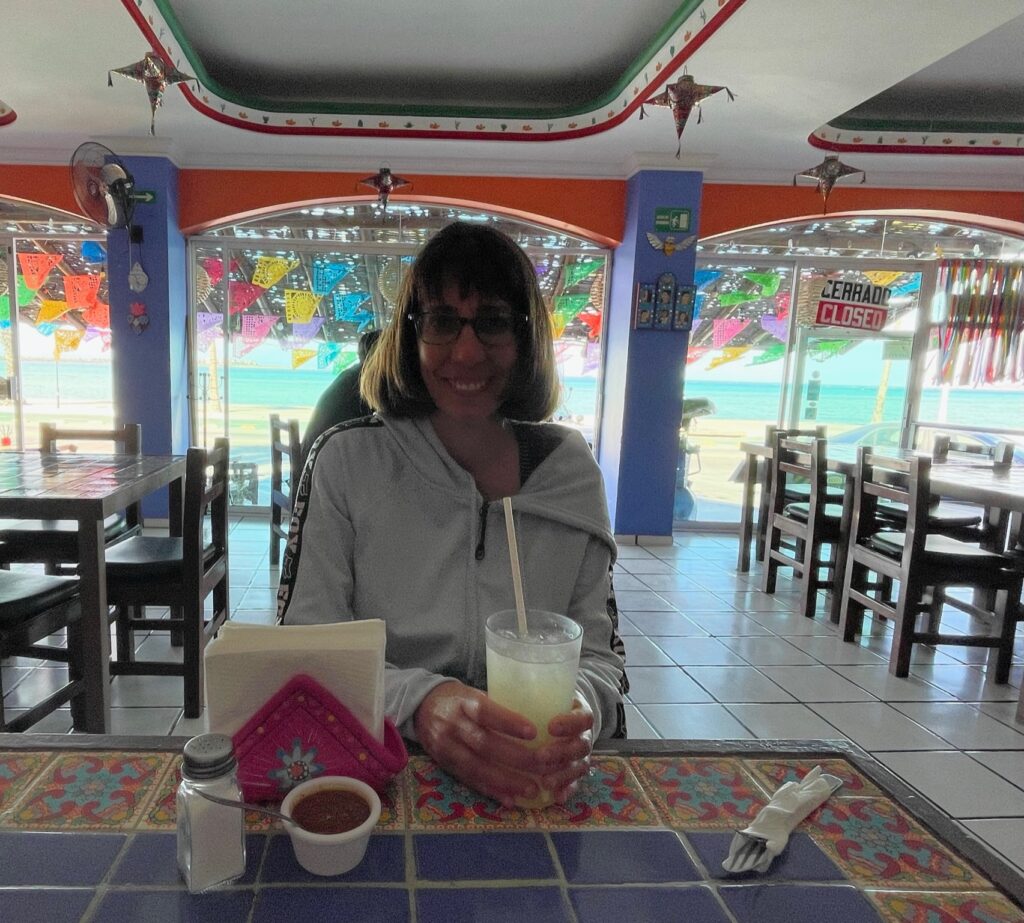
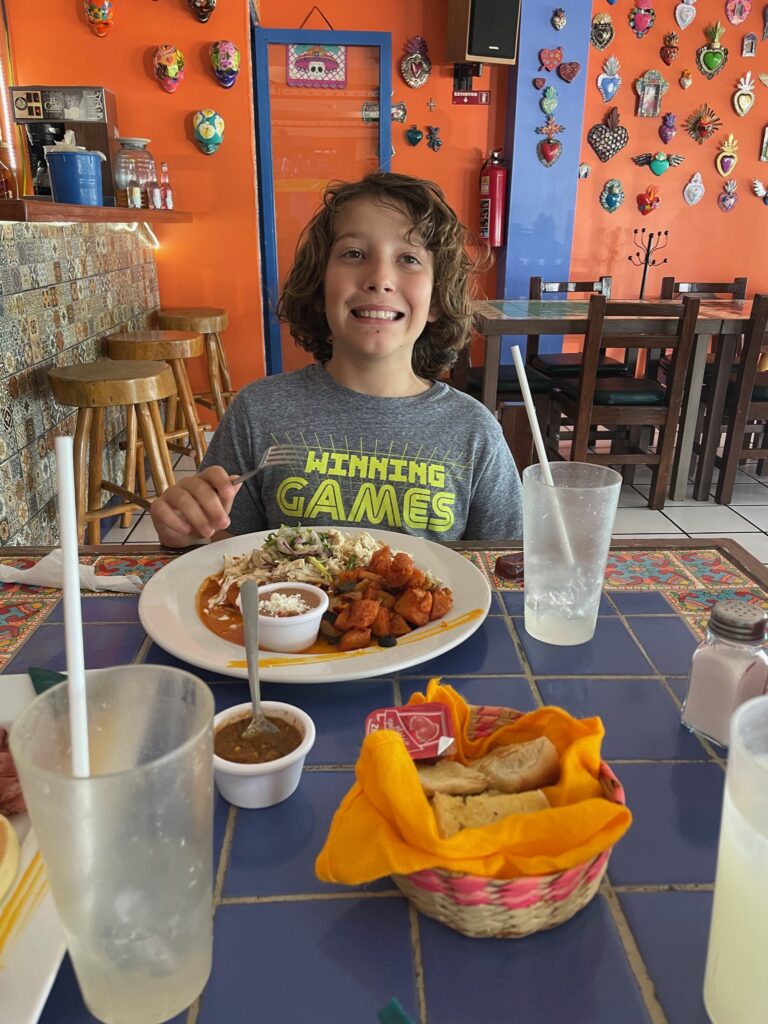
After returning to the marina, Eric tried to pump out the blackwater tank. He was dismayed to see that it wasn’t working. His best guess was that something was stuck in the pipe, but it was also possible that the syphon tube may have a leak in it. Eric put in a solvent called Sew Clean in the pipe in hopes it would dissolve whatever was (hopefully) in the line.
This is probably a good time to talk about a major project that we did a few years ago: changing the blackwater and greywater pipes. Each tank has two pipes; one that carried the fluid overboard and one that carried the fluid up to the deck via a pump. Eric calls these pipes “straws,” since they essentially work much the same as a straw does in a drink.
Years ago, when we had the hoses for the septic system changed, we’d learned that the four “straws” were made of stainless steel. Because the access hatch for the tanks are both off-center, the straws had to be angled in order to reach the bottom of the tank. The angle was created by welding two pieces of pipe together. At that point in time, we’d noticed corrosion on the the blackwater overboard straw, and we’d had it re-welded.
Several years after that, the blackwater deck “straw” had developed a hole at the weld, so water couldn’t be siphoned out. At that point, Eric had all of the stainless steel “straws” replaced with PVC. In theory, this should solve the corrosion problem.
We’d always had mild odor issues with the grey water tank. When we had the “straws” replaced, we’d realized that the grey water straws hadn’t reached bottom, so even when the tank was empty, there was perpetually some water/gunk in there. We had them make the grey water “straws” longer, too. Now that we can fully drain the grey water tank, smells are no longer an issue.
The installers had to drill holes in the top plates for the new pipes. And while we were having the work done, we also had them install a new float switch in grey water tank (not an upgraded float, just routine maintenance).
Here was Friday’s sunset.
